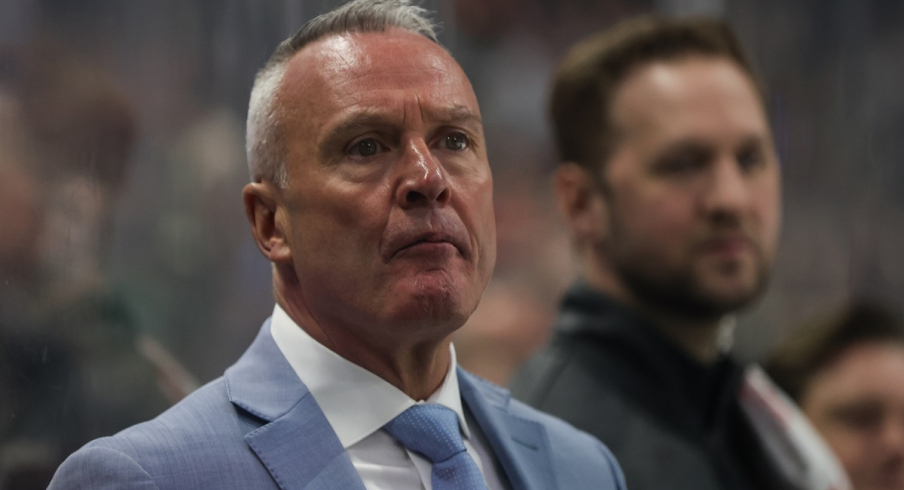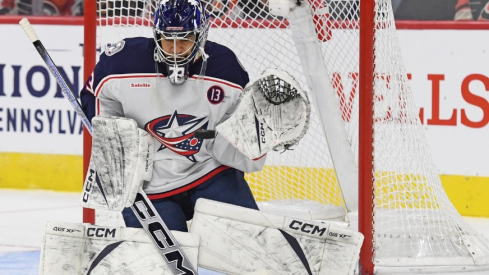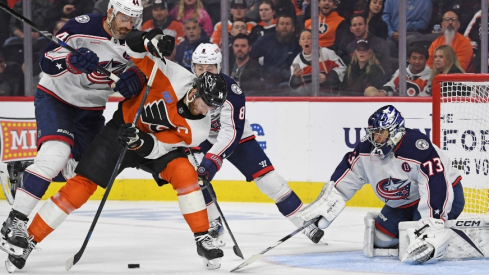With Dean Evason at the helm, the Columbus Blue Jackets are likely to employ a new set of tactics and systems in the coming season.
And while most NHL teams run systems that at least rhyme, we thought it would be helpful to look at what Evason's Minnesota Wild team tended to utilize last season before his firing. Of course, there's no guarantee that he will deploy the same systems, as much of that depends on personnel, and, candidly, some of it clearly did not work, but it's still instructive.
In his opening press conference, Evason sounded all of the cliches that one would expect to hear from an NHL coach in 2024, saying the team will play with "great detail and structure" and that they were "never going to get outworked".
In watching tape of the Blue Jackets vs. Wild game on 10/21/2023, just a few months before Evason's firing, a few items stood out. The Blue Jackets won the game 5-4 in overtime and thoroughly deserved the win. The Wild were seemingly happy to trade chances with the Blue Jackets, and it very much had the feeling of an early season game before teams tighten up.
Based on this game, and with the help of graphics from hockey analyst Jack Han's "Hockey Tactics" book, here are the basic tactics employed by Evason:
Defensive Zone
In the defensive zone, Evason seems to employ a man-on-man/hybrid zone defensive structure that has gained popularity in recent years. This is in contrast to the heavier zone defense that the Blue Jackets played under Pascal Vincent.
In this system, the two defensemen and center typically lock onto the opposition's three forwards, and the two wingers attach to the defensemen. When the puck is low in the zone, the wingers collapse to the net.
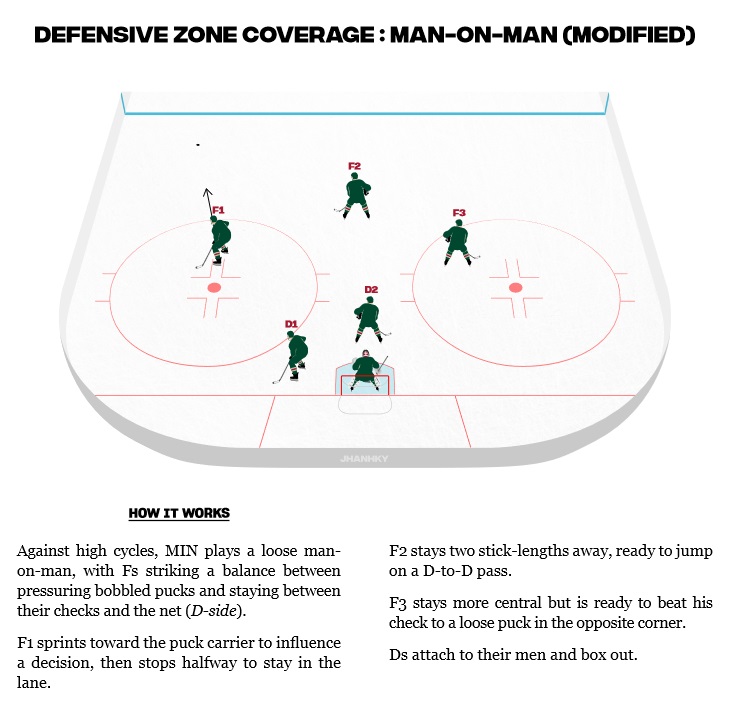

I was critical of last season's passive defensive structure, which allowed the opponents to possess the puck on the perimeter of the ice without much pressure. The thought process was that collapsing into the dangerous areas would be better than getting caught out of position. Unfortunately, Vincent failed to understand that giving NHL players practically unlimited time and space, even in "non-dangerous" settings, was a losing proposition.
Put simply, Evason's teams play more aggressively in the defensive zone. The upshot is that pressuring the puck puts strain on the opposition. The downside is that mistakes can be costly.
Neutral Zone Forecheck
In the offensive zone, the Wild ran a typical 1-2-2 or 2-1-2, depending on game state and what type of puck the opposition was working with. In the screenshot below (which is unfortunately missing 3 of 5 players due to camera angle), you can see the first forward pressuring and the second forward cutting the ice in half. These tactics are fairly ubiquitous across the NHL.
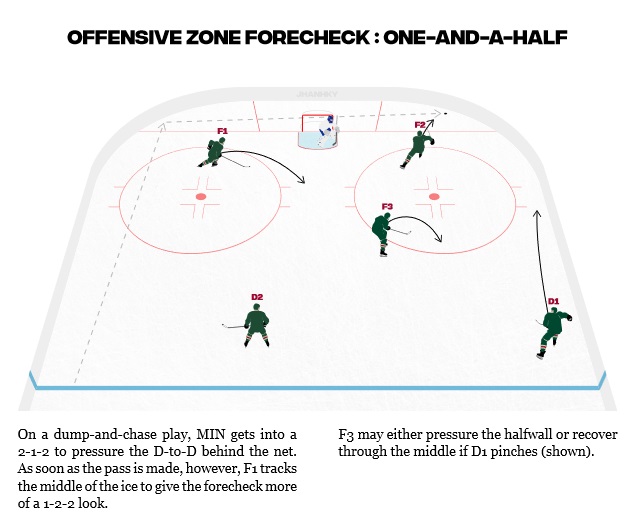
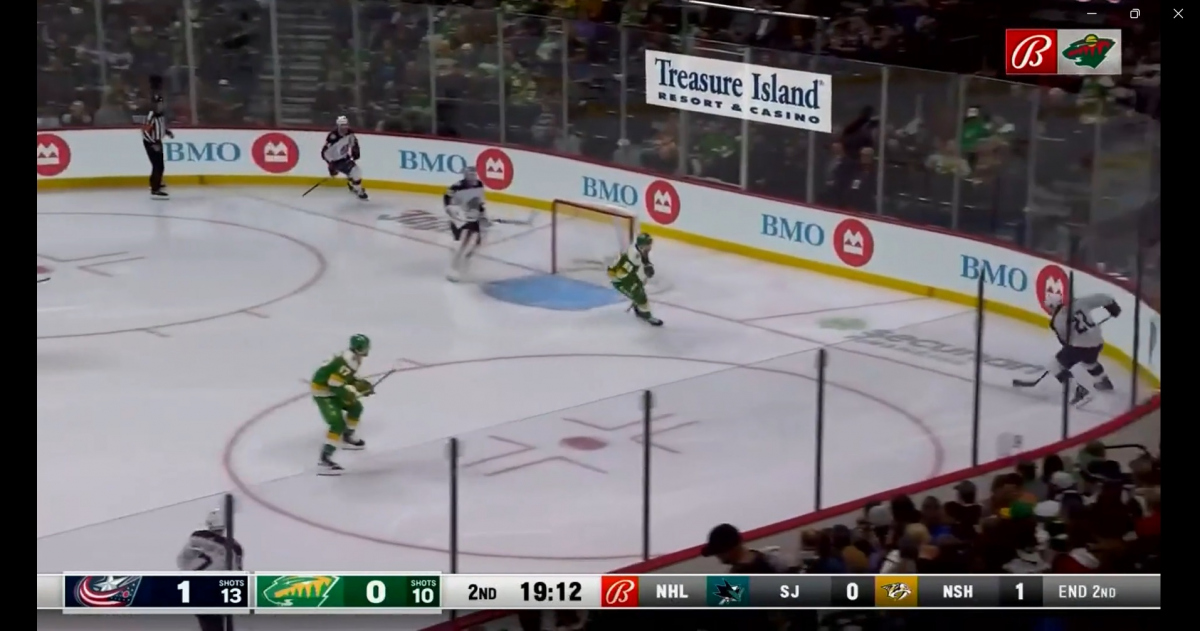
Offensive Zone
On offensive zone sets, the Wild found success with rotations. They often kept a 'two triangles' shape while staying in motion. This, like the offensive zone forecheck, is not something unique in today's NHL, where the "connector", the third/high forward, is higher in the zone for two reasons. The first is his ability to get lost in coverage away from the net, where teams typically collapse. The second is for defensive posterity, where a turnover can be neutralized as there would, by definition, be three players in sound position.
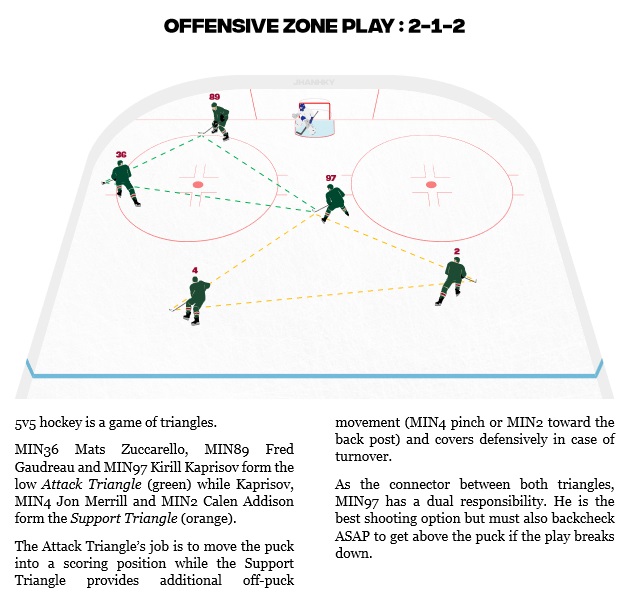
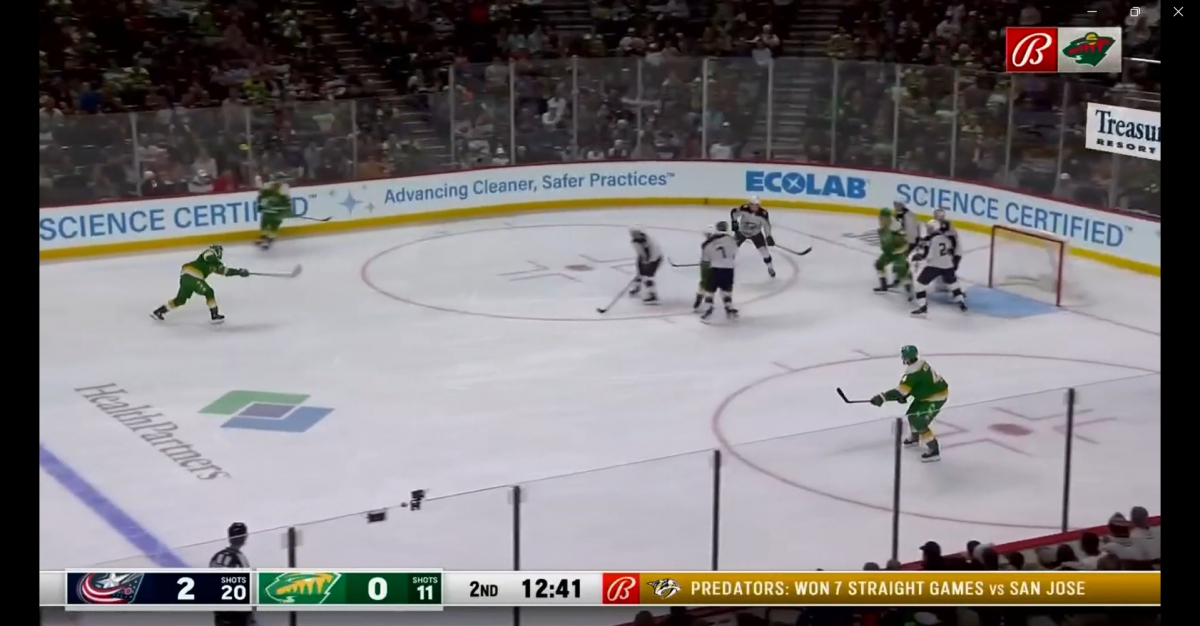
This picture, taken one second before the gaol, shows these concepts in practice.
Dakota Mermis, the shooter/goal scorer, has options aplenty. The Blue Jackets wingers collapsed instead of pressuring the point, but if someone had been higher in the zone, Mermis would have been able to make a strong side pass down the flank, or, even better, hit his wide-open defense partner for what could have been a one-timer.
The Blue Jackets have shown flashes of this type of offensive attack, and many of their best talents, like Johnny Gaudreau, Adam Fantilli, and Kent Johnson should feel at home in this type of attack.
Conclusion
The reality is that, aside from defensive zone structure, there may not be that many obvious tactical changes from Vincent to Evason. Most of the NHL runs a stylistically similar game, and so much of the game's flow is read-and-react and not scripted plays. However, I do think that Evason's eagerness to allow for creativity with the puck and his demand for structure without the puck will benefit the young players, in particular, on this team.
